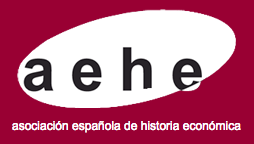Migración y género en las familias artesanas de Barcelona, 1770-1817
DOI:
https://doi.org/10.33231/j.ihe.2023.07.001Palabras clave:
Migración, Género, Historia de trabajo, Cataluña, N33, N93, J61, J16Resumen
A partir de los capítulos matrimoniales de los artesanos de la seda, el metal y la piel, el artículo distingue los patrones de migración artesana por oficio y género, y aclara algunas características –procedencia geográfica y socioprofesional, edad de los contrayentes, alfabetización o capacidad económica– de los que se incorporaron en el artesanado de Barcelona en 1770-1817. Ellos llegaron para aprender un oficio, la mayoría de ciertas comarcas próximas, siendo hijos de campesinos. Las mujeres inmigraron para trabajar o para casarse con una buena dote, muchas veces de comarcas más alejadas que los hombres; su aportación en metálico y, a veces, su oficio, fueron indispensables en la economía marital. Eran unos inmigrantes cualificados con un porcentaje alto de alfabetizados –también algunas de ellas–, unos de modesta posición social y algunos ricos, que contribuyeron a la acumulación de capital humano que asentaba la futura industrialización de la ciudad.
Descargas
Descargas
Publicado
Cómo citar
Número
Sección
Licencia
Derechos de autor 2023 Yoshiko Yamamichi, Àngels Solà Parera

Esta obra está bajo una licencia internacional Creative Commons Atribución-NoComercial-SinDerivadas 4.0.
Aquellos autores/as que tengan publicaciones con esta revista, aceptan los términos siguientes
- Los autores/as conservarán sus derechos de autor y garantizarán a la revista el derecho de primera publicación de su obra, el cuál estará simultáneamente sujeto a la Licencia de reconocimiento de Creative Commons Reconocimiento-No comercial-Sin obra derivada 4.0 Internacional que permite a terceros compartir la obra siempre que se indique su autor y su primera publicación esta revista, y no permite hacer uso comercial de la misma ni tampoco obras derivadas.
- Los autores/as podrán adoptar otros acuerdos de licencia no exclusiva de distribución de la versión de la obra publicada (p. ej.: depositarla en un archivo telemático institucional o publicarla en un volumen monográfico) siempre que se indique la publicación inicial en esta revista.
Plagio y fraude científico
La publicación de un trabajo que atente contra los derechos de propiedad intelectual será responsabilidad de los autores/as, que serán los que asuman los conflictos que pudieran tener lugar por razones de derechos de autor. Los conflictos más importantes pueden darse por la comisión de plagios y fraudes científicos.
Se entiende por plagio:
- Presentar el trabajo ajeno como propio.
- Adoptar palabras o ideas de otros autores sin el debido reconocimiento.
- No emplear las comillas u otro formato distintivo en una cita literal.
- Dar información incorrecta sobre la verdadera fuente de una cita.
- El parafraseo de una fuente sin mencionar la fuente.
- El parafraseo abusivo, incluso si se menciona la fuente.
Las prácticas constitutivas de fraude científico son las siguientes:
- Fabricación, falsificación u omisión de datos y plagio.
- Publicación duplicada.
- Conflictos de autoría.





